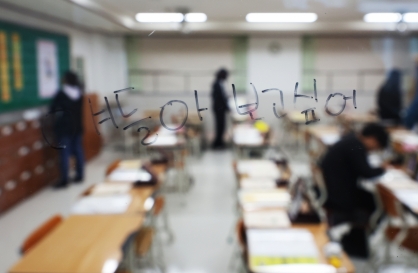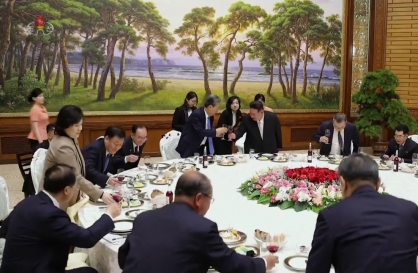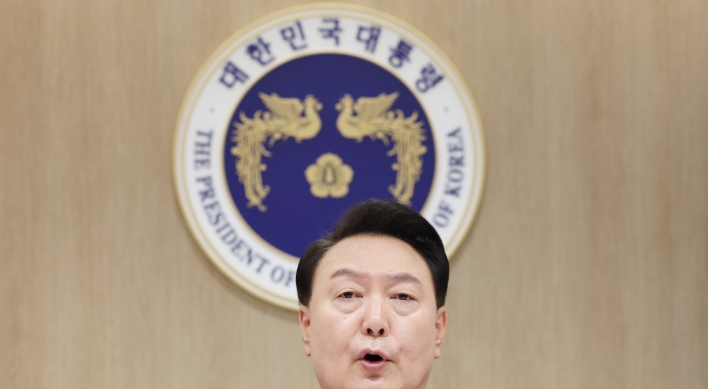[Editorial] Reality of income statistics
Lowest-income group fiscally supported; self-employed earnings down by largest rate
By Korea HeraldPublished : Nov. 25, 2019 - 17:06
The government is delighted at the income statistics for the third quarter, asserting that its income-led growth policy is having a positive impact, but it is hard to agree with this interpretation.
The average monthly income of the bottom 20 percent bracket rose 4.3 percent to 1.37 million won ($1,160) from a year earlier in the July-September period, according to Statistics Korea.
However, it increased largely thanks to the government’s fiscal support. Earned income for this group decreased 6.5 percent to 447,000 won, falling for the seventh consecutive quarter.
Transfer income such as allowances, basic pension and employment subsidies the government gives with taxes increased 11.4 percent from a year earlier to 673,700 won. This amounts to as much as 49 percent of the monthly income of the group.
Tax rebates essentially propped up the income of the bottom group. The increase in transfer income creates the false impression that it has risen. Without tax support, income in this bracket would have contracted.
In contrast, income earners in the top 20 percent saw monthly income increase merely 0.7 percent to 9.8 million won. As a result, income distribution, measured by the ratio of disposable personal income between the top and bottom groups, improved a bit from 5.52 in the third quarter last year to 5.37 in the same period this year.
Outwardly, the income disparity narrowed for the first time in four years. However, this is not very encouraging. The ratio dipped, but 5.37 is still the highest figure since 2009 except for the third quarter of last year. If fiscal support for the bottom group is not counted, the income gap widened further.
Earned income increased in all four groups above the bottom bracket. In terms of earned income, the gap between the poorest group and the other groups is bigger.
In a nutshell, the income gap narrowed thanks to fiscal support from state coffers. Supplementing household incomes with taxes is nothing more than a temporary fix. It cannot be sustained for good. No country would be poor if poverty could be eliminated simply through public spending.
Earned income in the bottom group decreased because many jobs for the economically underprivileged vanished in the wake of minimum wage hikes and a forced reduction of the workweek.
Business income earned by the self-employed plunged in the same vein. Household business income decreased 4.9 percent from a year earlier in the third quarter. It is the largest reduction rate since related data were first compiled in 2003.
The number of self-employed people with employees decreased by 143,000 in October from a year earlier. Bank loans to individual entrepreneurs increased 7.5 percent from a year earlier in late September. These figures show the difficulties the self-employed are facing.
To make matters worse, nonliving expenditure -- such as taxes, national pension, health insurance and interest paid -- surged 13.4 percent in the bottom income group, accounting for 25.4 percent of total income. It is the first time since 2003 that nonliving expenditure has taken up more than 25 percent of income.
Nonliving expenditure has risen for 10 successive quarters since the second quarter of 2017, when Moon was inaugurated.
The business environment for the self-employed is stagnating while households in the lowest income group increasingly count on the government’s financial support. This dire state of affairs is evidence of the adverse effects of its income-driven growth policy.
But encouraged by the latest income data, the government made surreal comments. “It is clear that the income-led growth policy is effectual,” President Moon Jae-in said. “The income situation is improving without doubt.”
Deputy Prime Minister and Minister of Economy and Finance Hong Nam-ki said, “The pursuit of income-led growth and inclusive growth paid off in the third quarter.”
They did not mention the decrease in earned income, increase in nonliving expenditure or decrease in the income of the self-employed.
If the government sees only what it wants to see, the underlying problems will only fester.
The average monthly income of the bottom 20 percent bracket rose 4.3 percent to 1.37 million won ($1,160) from a year earlier in the July-September period, according to Statistics Korea.
However, it increased largely thanks to the government’s fiscal support. Earned income for this group decreased 6.5 percent to 447,000 won, falling for the seventh consecutive quarter.
Transfer income such as allowances, basic pension and employment subsidies the government gives with taxes increased 11.4 percent from a year earlier to 673,700 won. This amounts to as much as 49 percent of the monthly income of the group.
Tax rebates essentially propped up the income of the bottom group. The increase in transfer income creates the false impression that it has risen. Without tax support, income in this bracket would have contracted.
In contrast, income earners in the top 20 percent saw monthly income increase merely 0.7 percent to 9.8 million won. As a result, income distribution, measured by the ratio of disposable personal income between the top and bottom groups, improved a bit from 5.52 in the third quarter last year to 5.37 in the same period this year.
Outwardly, the income disparity narrowed for the first time in four years. However, this is not very encouraging. The ratio dipped, but 5.37 is still the highest figure since 2009 except for the third quarter of last year. If fiscal support for the bottom group is not counted, the income gap widened further.
Earned income increased in all four groups above the bottom bracket. In terms of earned income, the gap between the poorest group and the other groups is bigger.
In a nutshell, the income gap narrowed thanks to fiscal support from state coffers. Supplementing household incomes with taxes is nothing more than a temporary fix. It cannot be sustained for good. No country would be poor if poverty could be eliminated simply through public spending.
Earned income in the bottom group decreased because many jobs for the economically underprivileged vanished in the wake of minimum wage hikes and a forced reduction of the workweek.
Business income earned by the self-employed plunged in the same vein. Household business income decreased 4.9 percent from a year earlier in the third quarter. It is the largest reduction rate since related data were first compiled in 2003.
The number of self-employed people with employees decreased by 143,000 in October from a year earlier. Bank loans to individual entrepreneurs increased 7.5 percent from a year earlier in late September. These figures show the difficulties the self-employed are facing.
To make matters worse, nonliving expenditure -- such as taxes, national pension, health insurance and interest paid -- surged 13.4 percent in the bottom income group, accounting for 25.4 percent of total income. It is the first time since 2003 that nonliving expenditure has taken up more than 25 percent of income.
Nonliving expenditure has risen for 10 successive quarters since the second quarter of 2017, when Moon was inaugurated.
The business environment for the self-employed is stagnating while households in the lowest income group increasingly count on the government’s financial support. This dire state of affairs is evidence of the adverse effects of its income-driven growth policy.
But encouraged by the latest income data, the government made surreal comments. “It is clear that the income-led growth policy is effectual,” President Moon Jae-in said. “The income situation is improving without doubt.”
Deputy Prime Minister and Minister of Economy and Finance Hong Nam-ki said, “The pursuit of income-led growth and inclusive growth paid off in the third quarter.”
They did not mention the decrease in earned income, increase in nonliving expenditure or decrease in the income of the self-employed.
If the government sees only what it wants to see, the underlying problems will only fester.
-
Articles by Korea Herald




















